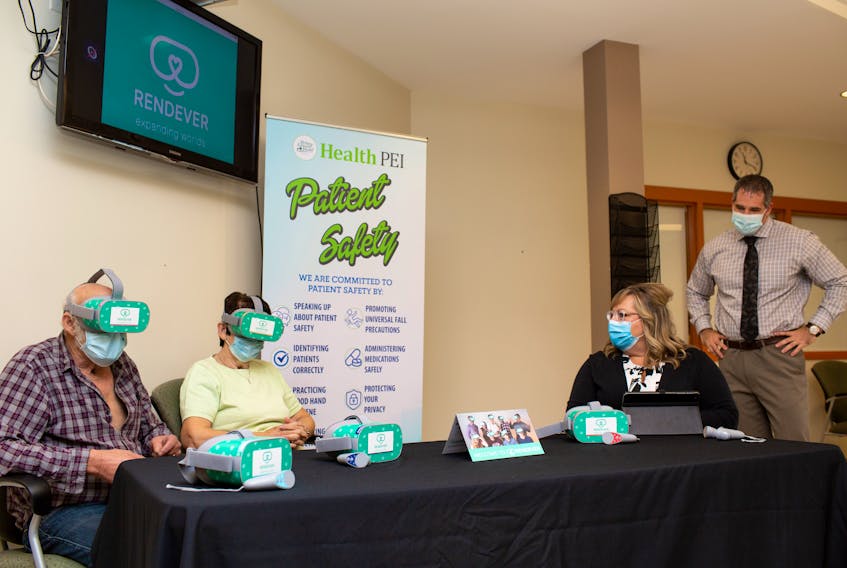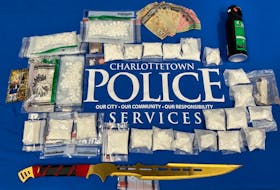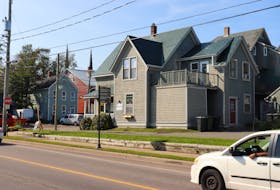Seniors are using virtual reality to hang out together in four West Prince facilities.
Hector “Heckie” Buote lives at the Margaret Stewart Ellis Home in O’Leary and is an avid user of the virtual reality ( VR) system which consists of a tablet and a headset.
“It’s pretty interesting,” said Buote. “You can go anywhere all over the word and see stuff. What was most interesting was the Grand Canyon, the Colorado River going through the Grand Canyon. To see how the river winds through the cliffs ( was) pretty good.”
The system is easy to use. Staff set up the program on a tablet and the resident dons a simple headset.
The experiences can be interactive like Buote’s canyon tour or his favourite game “I spy” which has players moving through a virtual room on a competitive scavenger hunt, the person who finds the most items wins.
“You got to have a lot of space,” he said.
Recreation manager Pam Corrigan said Buote enjoyed playing the game outside on the patio over the summer.
“When he’d take his headset off, he was like, ‘ wow, how did I get way over here!’” said Corrigan.
Buote has also tried mountain biking from his easy chair.
“You’re followin’ the bikers and your chair seems to be moving right along with them,” he said, adding it felt like he was right there in the woods.
But not all the residents enjoy such an immersive or fast- moving experience, so the developer Rendever, has provided thousands of options like meditation exercise or the popular room full of puppies.
Corrigan has even started to link the VR program to the TV so everyone in the room can see what the person wearing the headset is seeing and participate somewhat, she said.
The VR system has made is easier for Buote to keep in touch with his friends in different parts of the home. Called “households”, they were kept separate during the early days of the pandemic. Buote and his pals used a VR program called “connection corner” which let them virtually gather in a living room and chat.
“I missed them. So, I liked to get together to see them and heighten your spirits,” said Buote.
Paul Young, administrator for Community Hospitals West, is always looking for ways to improve patient experiences.
“One of the concerns that we’re always very cognizant of is the social isolation that our seniors deal with in all our institutions.”
Young saw virtual reality as a cost- effective way to provide experiences and help with social isolation
Young struck a partnership with the company, Rendever. Then he and the community
health committee received two senior programs grants from federal government for the equipment.
The summer launch was pushed up when Young saw just how deeply the pandemic safety measures were isolating his residents.
The VR systems arrived in April 2020 and have been used nearly every day since.

“It’s been absolutely incredible. We’ve offered over 100 dedicated sessions. We’ve provided thousands of individual experiences and well over 150 dedicated hours of virtual reality,” said Young “It became one of the only activities that we could do, both in the hospital and in long term care in the early days of the pandemic.”
The VR system takes a “guide”, someone like Corrigan to get the program going on the tablet and guide the participants along the experience by pointing out objects or sights in the program or asking engaging questions. Each VR experience has a ripple effect for the residents and patients.
“They’re having a dialogue,” said Young. “That dialogue quite often later translates in the dining room or the next time they're conversing with a resident.
“They know they’re not alone, they know they’re part of a larger group … it’s about creating that connection … whether that’s one- on- one or there’s a hundred people in the room.”









